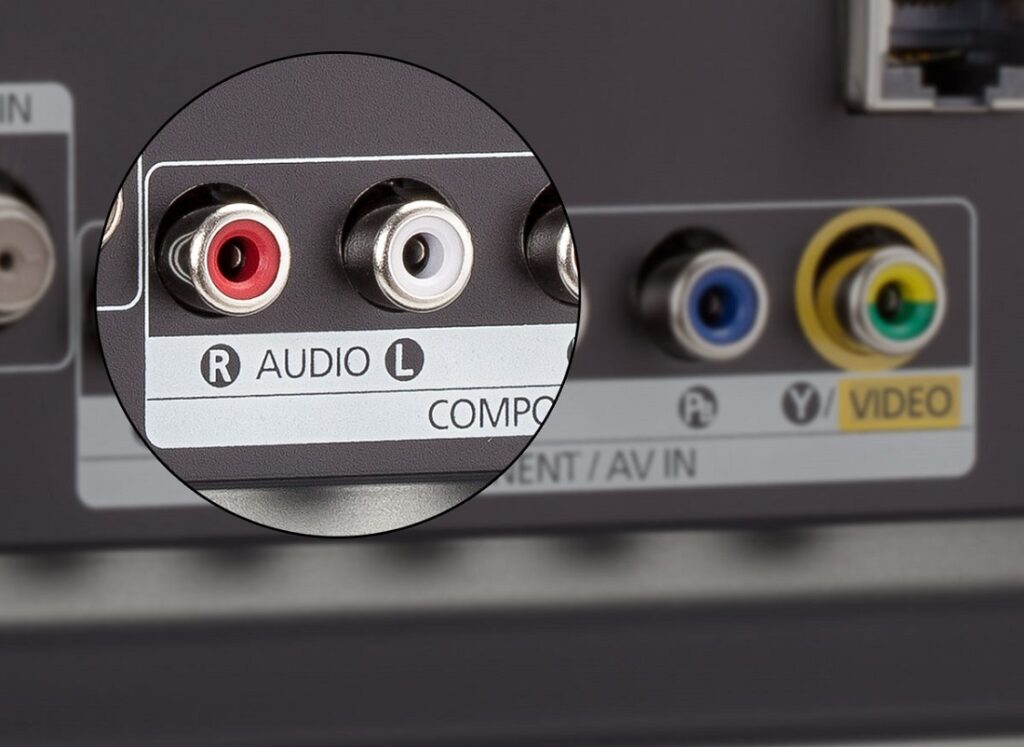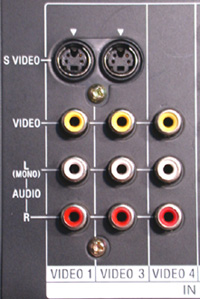You have bought your new TV and would like to use its original features but you really do not know what features does it possess. You have come across the terms AV, HDMI, and various other appendices. So, let’s discuss What does AV mean on TV. We will also explain what it does and its importance.
What does AV mean on TV ?
The term AV on your TV signifies audiovisual signals. This AV is the one that produces audio and video signals. AV allows your TV to return to life for your entertainment, whether that’s Netflix in your family home or watching the newest movie at the theatre.
What is an AV input?
An AV input indicates the port that receives audio/visual signals from your device. AV inputs help with the tv calibration – a process that permits you to urge the videos within the highest quality possible. The AV terminals are available on several devices including DVD recorder, VHS recorder, modern soundbars, and even on your TV.
To use the AV slot we will need AV cables and also some skills.
What is an AV output?
An AV output sends audio/visual information from one piece of kit to another.
Note: Now whether you’re a specialist or a beginner in video and audio devices, it’s important to know the elemental aspects of your devices, in this case, your TV. Knowing this helps you to enhance the general entertainment experience and connect your system without any trouble.

What is an AV source?
An audio-visual source connects your television to receive audio-visual data. Thus, your device will be able to receive both audio and video signals.
Taking an example, the DVD player is your AV source to watch DVDs on your TV.
Other AV sources on TVs include Blu-Ray players, Apple TV, Amazon Fire, cameras, PS5, Xbox, and Nintendo.
Now, that we know what an AV source is let’s discuss what is an AV sink device.
AV sink device
AV sink displays AV signals. It’s otherwise referred to as a display device, endpoint, display screen, TV screen, or output device.
Here’s a post on laptops that have HDMI inputs !!!
Connecting your AV receiver to TV
The audio-visual receiver on your system is the centrality of your device. It controls the video and audio data of the devices connected to your system including your DVD player, speakers, and any other peripheral devices that may be connected.
However, the primary thing you ought to do is connect your TV to your receiver. For this, you will need to follow a certain methodology to correctly connect your TV to an AV receiver. So, let’s proceed with that right away :
Check the back of your AV receiver
This is done to ensure the type of your input and check its compatibility with your television system. The cables may be an HDMI cable, S-video cable, or even composite cables.

Choose your appropriate method of connecting
A recommendation for you here is that you purchase the very best quality cables to experience the simplest quality video and audio available. As a matter of fact, HDMI cable will offer you the highest-quality audio and video, followed by S-Video, component, and eventually composite cables.
Plugin your cable now
Plug the cable into the right output on the TV on one end and do the same inserting the other end into the precise input on the receiver.
This will ensure that various signals are going to be transmitted from your TV to the receiver via these cables. This will help you regulate the signals and also control the other home theatre components using an equivalent remote and device.
Suppose, if you use the HDMI cable to connect then you’ll only have a single cable doing both the audio and video transmissions. While using composite, component and S-Video requires plugging multiple cables into the proper inputs to receive proper audio-video signals.

Select the acceptable input on the front of the receiver
After plugging your TV into the rear of your receiver, you plugged it into one. These are there to permit you to plug several devices into one receiver.
WRAPPING UP — What does AV mean on TV
In this post, we learned about what AV input is? What does it do? How to use the AV source and also the different types of cables that come for the audio-visual source. Hoping in anticipation, that this post helps you in your endeavor to get acquainted with AV signals on your television systems. Until next time. See-ya 🙂
